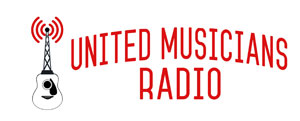The Blues was clearly created by Negros. No one disputes that. Whether you believe it started with W.C. Handy or Charley Patton, or by some unknown cotton picker in Mississippi playing a Sears acoustic guitar, there’s no question that black men and women somewhere created the blues style. And in the beginning those are the people who embraced it.
And as it evolved through the 20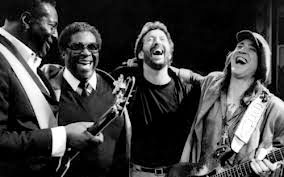 ‘s and 30’s, it was mostly black people who loved it and nurtured it and made it spread throughout the country. It was THE music that was played in black juke joints and clubs throughout the south and eventually in Memphis, Chicago, St. Louis, Los Angeles, New York, and a hundred other cities where blacks lived.
‘s and 30’s, it was mostly black people who loved it and nurtured it and made it spread throughout the country. It was THE music that was played in black juke joints and clubs throughout the south and eventually in Memphis, Chicago, St. Louis, Los Angeles, New York, and a hundred other cities where blacks lived.
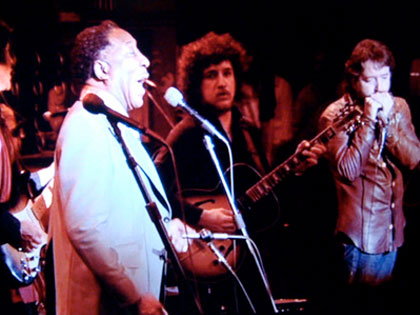 Then something happened…
Then something happened…
Either because the blues became passe or because other music became more popular, black folks began to lose interest in their own music. It didn’t die out, but fewer and fewer records were being sold especially to blacks. Other music was being found in the juke boxes at black clubs.
During the 40’s swing music was the best and most popular music in the land. Both blacks and whites loved it and though racism was still rampant, you could find blacks and whites enjoying Count Basie and Benny Goodman records and concerts together. Clearly “The Blues,” particularly “country blues” was not as popular.
But who’s to argue that swing does not have much of the blues style in it. You could say that what was happening was The Blues style was being spread into other types of music. In many cases blues and jazz were mixing together and forming other types of Blues. Certainly swing and jump blues of the 40’s had many elements of the blues as part of the style. Blues was just changing and evolving.
Then in the 50’s, rock and roll began to take over. Even though Muddy Waters said, “The Blues had a baby and they called it rock and roll,” blues music, was being replaced in popularity. And the stars of the blues were finding it harder and harder to survive.
Rock and Roll was primarily a white music, even though there were many black artists that were rock and roll stars (Chuck Berry, Little Richard, Fats Domino). And certainly Elvis Presley got much of his inspiration from blues music and even played blues songs on his early recordings.
The music business was a big part of why whites became the focus of rock and roll. They had the money to buy records and they were beginning to appreciate music that was more raw and real compared to the popular music of the day… and they could dance to. There was clearly a market and white music business executives saw the opportunity.
That’s not to say there wasn’t a black market for blues music. Black’s still bought records and kept some of the black artists working in the clubs. B.B. King worked heavily through the 50’s mostly working the Chitlin’ Circuit throughout the south, often working over 300 shows per year.
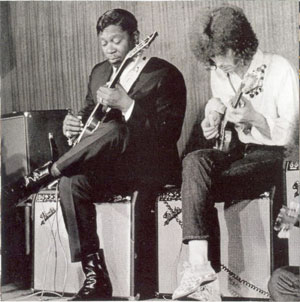
And it’s not to say all blacks didn’t like the music. It was just popular in fewer numbers.
Certainly, some of the stars of the early blues like, Son House, and Skip James, and Lonnie Johnson were struggling to make a living. Some stopped playing and took on regular jobs. The “Golden Age” of traditional blues appeared to be over.
Folk Music Saves The Day
For many Delta and Country Blues artists the 40’s and 50’s went by without getting much attention or work. Then something happened. The folk music revival of the early 1960’s brought many of the early country blues artists back into the spotlight. Although most of the 60’s “folk” artists were white, and certainly the audience was, there was a large blues contingent that was popular including Leadbelly, Josh White, Mississippi John Hurt and Odetta. They were seen as part of the American folk tradition and blues was seen as a traditional music that came from rural America. The good news is this brought the blues to many white kids for the first time.
Personally I remember seeing a white duo perform a “ragtime” version of Stagger Lee (also called Stack-o-lee, Stack-a-Lee, and others) in my small town’s library. It made a powerful impression on me and I still remember the version well, even though I was about 15 at the time and hadn’t started playing guitar yet. The song is of unknown origin but Mississippi John Hurt played a version and there were earlier versions by many country blues artists through the years.
This particular version was being presented to me by a couple of white boys in their 20’s who somehow had learned how to play the Piedmont style of ragtime blues quite well on their guitars. It made such an impression I still remember it well 50 years later. This “translation” process will be a recurring theme in my musical life thereafter… that of a white musician introducing me to black music that I would come to love and cherish my whole life. It lead me to research the origins of the music and the great black musicians who created it and ultimately lead me to create this website. This “hand-me-down” process that created a sincere love of The Blues for whites like me I’m sure was recreated many times for many white blues guitarists of the 60’s and beyond.
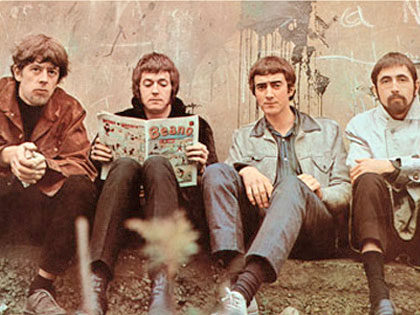 The American Folk Blues Festival
The American Folk Blues Festival
In fact this wasn’t only the case for white Americans. In Europe the same thing was happening to white folks there thanks to some European Promoters.
A couple of European blues lovers, promoters Horst Lippmann and Fritz Rau brought many of the top blues musicians of the era to Europe to perform in a series of concerts. The American Folk Blues Festival lasted for over 20 years and brought blues greats like, T-Bone Walker, Sonny Boy Williamson, Willie Dixon, Son House, Muddy Waters, and Otis Rush to Europe to perform. For many this was the most money they ever made performing and in Sonny Boy Williamson’s case, caused him to stay in Europe for a time. The concerts have been turned into 3 DVDs and you can learn more about these concerts on this page.
The real point is that these concerts brought American Blues to English musicians like Eric Clapton, John Mayall, Mick Jagger, Long John Bawldry, and many others who attended the shows. Many went on to create their own blues-based bands like The Rolling Stones, The Animals, John Mayall and The Bluesbreakers, Fleetwood Mac, Led Zeppelin, The Yardbirds, The Spencer Davis Group and many others.
These bands in turn brought the blues back to Americans, like me, who learned by proxy about the great blues musicians in our own country. Muddy Waters, Sonny Boy Williamson, Howlin’ Wolf, and Son Seals all enjoyed renewed careers thanks to these English bands who played many of their songs.
Albums That Turned On White Folks To The Blues
Through the 60’s and 70’s white music was very eclectic. Popular white bands played many styles of music, and clearly some of the most popular played some blues. Certainly, the British Invasion included many bands that brought blues back to us and showed us how cool it was. Here’s a few albums that caught my attention during that time. If you have some albums that were important to you, feel free to leave a comment at the end.
London Howlin’ Wolf Sessions
One of the milestone albums that affected me was an album called The London Howlin’ Wolf Sessions. On this album Howlin’ Wolf played many of his and other blues musician’s songs with British musicians Eric Clapton, Steve Winwood, Charlie Watts and Bill Wyman (of the Rolling Stones), Ringo Starr, Klaus Voormann. Hubert Sumlin, Howlin’ Wolfs regular guitar player, made the sessions too but only because of the insistence of Eric Clapton.
This 1971 album created credibility for Howlin Wolf and blues in general and brought many of these songs into the repertoire of many bands of the day. Back then your popular bands could play any type of music it wanted and I remember my band of the time played everything from Grateful Dead, to country songs, to blues without thinking. Music was just music to us.
These and other albums were big influences on a young white guitarist’s ears and musical style. Other songs and albums that were big influences on white guitarists in the 60’s and early 70’s include…
Taj Mahal – Natch’l Blues
The Allman Brothers Band – Live At Fillmore East –
Particularly Stateboro Blues and Stormy Monday
Paul Butterfield Blues Band
Fleetwood Mac – Live At The Boston Tea Party
Cream – Fresh Cream
Rolling Stones – England’s Newest Hitmakers
Of course there are many other albums where blues was part of the song list if not the major focus of the albums. One that sticks in my mind is a Lovin’ Spoonful album that had a song called Sportin Life. It was really the only blues song that The Spoonful ever did as far as I know. John Sebastian was a great harmonica player and his harp on the song is a highlight. The song made a big impression on me and it’s still in my own repertoire today.
And many of the bands of the 60’s and 70’s played all types of music with blues being one of the styles. Here’s some single tracks that stand out in my memory…
- Boz Scaggs – “Loan Me A Dime” from his solo album
- Jeff Beck – “I Ain’t Superstitious” from Truth album
- The Doors – “Backdoor Man” from The Doors
- The J Geils Band – “Serves You Right To Suffer”
- The Blues Project – “Two Trains Running”
So this is how many a white guitarist and music fan was introduced to the blues in the late 60’s and early 70’s. This introduction by white bands of the day was the first time many heard the blues and would spark a lifelong interest in the blues. For many it inspired them to explore blues history and to learn more about the black musician’s music and story. I wonder if Robert Johnson would ever have been rediscovered if it weren’t for Eric Clapton’s enthusiastic endorsements and sharing of his influence.
The Blues Brothers Factor
One of the biggest “bump-ups” in Blues popularity occurred in the late 70’s when John Belushi and Dan Aykroyd started appearing as Jake and Elwood Blues on Saturday Night Live. Their skit was so popular that they decided to make a movie and subsequent album. The beauty of this new approach is they would use the actual blues stars to play themselves in the movie. We were introduced to blues creators like Steve Cropper and Duck Dunn of Stax Studios as well as Matt Guitar Murphy, Cab Callaway, and reintroduced to Ray Charles.
Unfortunately they didn’t use as many of the great Chicago stars they could have, but at least many of the songs in the movie and on the album were classics that brought back greats like Big Joe Williams, Junior Wells, Sam and Dave, Eddie Floyd, and others.
As dated and unauthentic as the album and the movie sound now (all except for the Cab Callaway section) it did bring the Blues to many new fans and helped spark the renewal of blues interest that lasted through the 80’s and 90’s. How many new blues societies were started because of this new wave of interest. And again all of this interest led to people exploring the history of the blues and led them back to those great blues men and women of the 20’s, 30’s, and 40’s, and hopefully buying their records.
The Blues Today
The popularity of the Blues has settled into a comfortable place. No it’s not as popular as it was 10-15 years ago but the fans left are as committed to the blues as ever.
If you look through Blues Revue or Living Blues magazine you’ll see lots of new artists coming out with music. Yes most of them are white but there are a few blacks in there as well. The Blues is alive and well if not quite as popular as it was in the late 80’s and 90’s when every major city had lots of blues clubs and blues bands could work most nights.
In my area in Tampa Bay Florida, it’s a bit hard for a blues band to make a livin today. Sure you can play a couple of nights a week, but you better be good and you better be ready to play other types of music to survive. I would say the number of working bands has been reduced by 50% or more in the last 10 years.
So yes the blues is now mostly white. I seldom see many black people at blues concerts and that’s really been the case since the late 50’s really. But whites do really love the blues. They play it, buy it and go to blues festivals to see it. It’s just that the audience has changed a lot in the last 50 years.
The Blues is now White. That’s all there is to it.
If you’d like to share your story of how you got turned on to the blues please feel free to register and make a comment. All comments are welcome.
